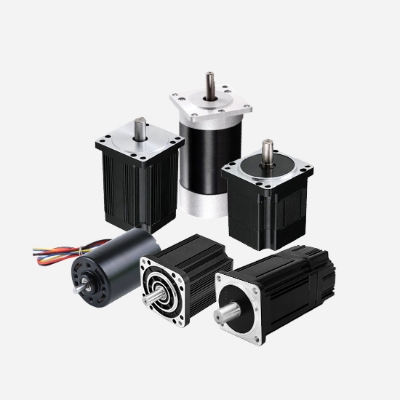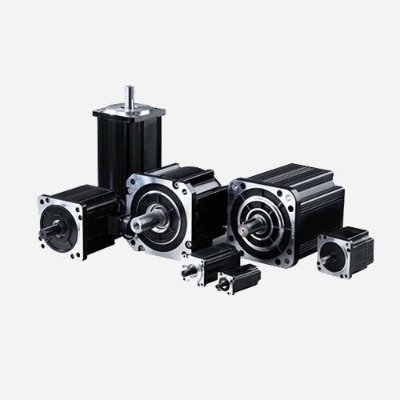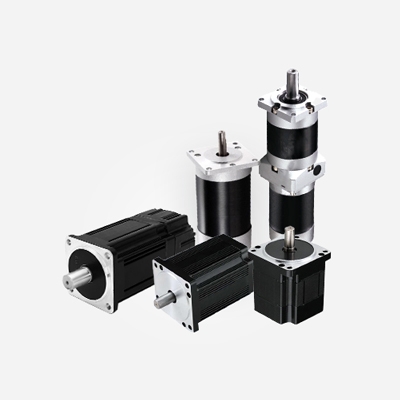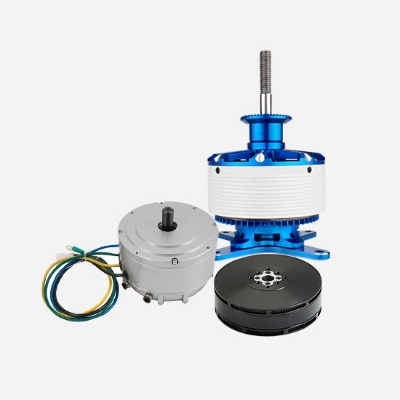A brushless DC motor or BLDC motor is a rotating motor consisting of a stator armature winding and a rotor permanent magnet, whereas in a conventional brushed DC motor the stator consists of permanent magnets and the rotor consists of an armature winding. While conventional DC motors use mechanical commutators to commutate themselves, brushless DC motors require electronic commutation to control the direction of the current through the windings. Typically BLDC motors have three-phase windings wound in a star or triangle pattern and require a three-phase inverter bridge for electronic commutation.
The driver is composed of power electronics and integrated circuits, etc. Its functions are: accepting motor start, stop and brake signals to control motor start, stop and brake; accepting position sensor signals and forward and reverse signals to control the power tubes of the inverter bridge to generate continuous torque; accepting speed command and speed feedback signals to control and adjust the speed, providing protection and display, etc.

DC brushless motor has a fast response, large starting torque, from zero speed to rated speed with the performance of rated torque, but the advantages of DC motor is also its disadvantage because DC motor to produce a constant torque performance under rated load, the armature magnetic field and rotor magnetic field must be maintained at a constant 90 °, which requires carbon brushes and rectifiers. Carbon brushes and rectifiers generate sparks and carbon dust when the motor is rotating, so in addition to causing component damage, their use is also limited.
In BLDC motors, the phase windings are distributed in a trapezoidal fashion to generate a trapezoidal BEMF waveform. The commutation technique generally used is trapezoidal or called block commutation of only two phases at any given point in time. Another method of motor commutation is called sinusoidal commutation, where all three phases will be performed at any given point in time. PMSM motors are also interchangeably referred to as BLDC motors with windings that are distributed in a sinusoidal manner that lends itself to this sinusoidal type of commutation. The torque produced by a PMSM motor is smooth compared to a BLDC motor, which produces more fluctuations in torque. However, PMSM motors produce less peak torque than BLDC motors.
Speed control methods of DC brushless motors
- Use voltage to control the speed, torque is mainly controlled by the current, usually, with a matching motor driver, change the output voltage of the driver can also control the speed of the brushless motor, if there is no driver, want to control the motor by themselves, you need to look at the motor power and operating current.
- PWM speed control, DC motor PWM speed control principle is different from the principle of AC motor speed control, it is not through the frequency modulation to adjust the speed of the motor, but by adjusting the drive voltage pulse width, and with some corresponding energy storage components in the circuit, change the amplitude of the voltage delivered to the armature, so as to achieve the purpose of changing the speed of brushless DC motor. The modulation method is amplitude modulation.
How to manipulate PWM to control speed?
- The longer the time, the longer the work time, and the higher the motor speed.
- The use of PWM manipulation signal to manipulate the transistor conduction time, and change the manipulation voltage level to achieve.
If the motor is a small power can also use resistance control speed (not recommended, the way is very simple, a potentiometer in series can be, only this way will reduce efficiency, so do not advocate), high-power motors can not use resistance control speed, because this requires a small resistance value high-power resistor (Vonda resistance value is very small), the resistor is not easy to find and the efficiency of this program is too low, it is best to find a Matching DC brushless motor driver.




